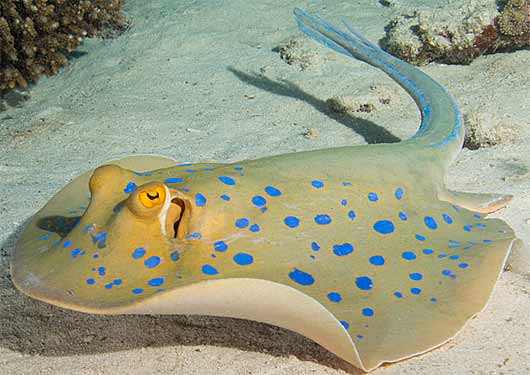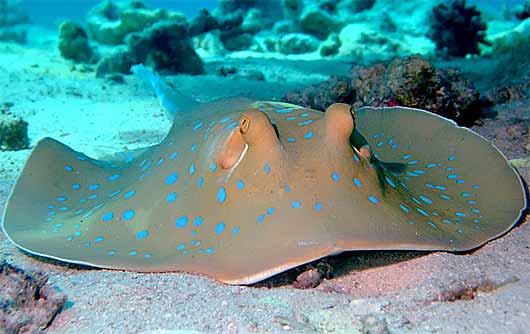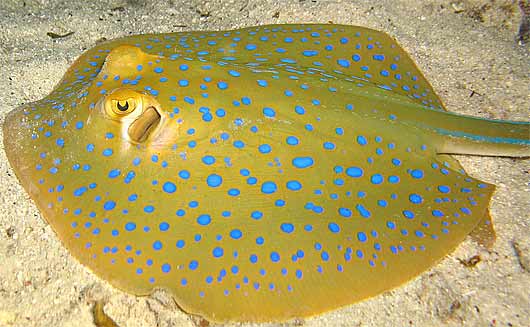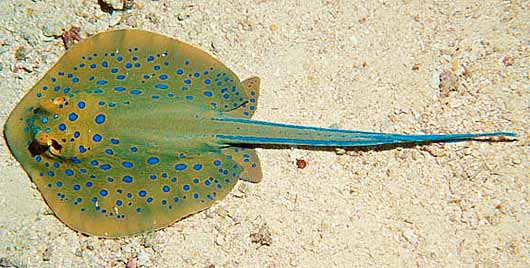Blue-Spotted Fantail Ray – Barbed and Brightly Colored But Shy

The blue-spotted fantail ray, also known as the blue-spotted ribbontail ray, is common in shallow waters of the tropical Indo-West Pacific from South Africa to the Solomon Islands, including the Red Sea. It can be found from to the inter-tidal zone to a depth of at least 65 ft (20 m). It lives around coral reefs, where it shelters under ledges and in caves at low tides, moving inshore to feed in shallow sandy areas when the tides rise.
The species belongs to the family of whiptail stingrays, which have long thin tails with venomous barbs. The flattened heads are completely fused with the pectoral fins and body to form a disc that is roundish in shape. Swimming is accomplished by undulations of the disc and “wing” surface. There are five gill slits on the underside, and a large spiracle (respitory hole) just behind and beneath each eye. The mouth has many small teeth.

The blue-spotted ribbontail ray’s disc is tan to yellow-green in color decorated with bright blue dots. A bright blue stripe runs along the sides of the tail, from the base to to the tip. There are usually two barbs, which are also blue. A blue skin fold running down the underside of the tail, from the barbs to the tip of the tail, is why the species is called “ribbontail” or “fantail” ray. This species is sometimes confused with the blue-spotted stingray, or blue-spotted maskray, which belongs to the same family, and lives in the same regions. The maskray is brown or tan with fewer and paler blue spots, and does not have the blue tail stripes.
Blue-spotted fantail rays feed on small mollusks, shrimps, fish, worms, and crabs, which they find buried in the sand. They are known to be active by day, but may also feed at night. When not feeding, they frequently visit “cleaning stations” to have parasites removed by cleaner morasses. Reproduction is live-bearing, with about seven young per litter.

This species is of little interest to fisheries but must be on the lookout for some predators like some sharks and dolphins. Frequently encountered by divers, it is shy and not aggressive even though well-armed with two spines sheathed in tissue served by the venom glands. However, reports of serious injuries to humans are extremely rare. Since these rays hide under coral and in caves, and rarely bury themselves under sand, the chance of a person stepping on one accidentally is much less than for other members of the family. The vibrant colors are in stark contrast to the cryptic colors of most other stingrays. Many animals that show vibrant colors are extremely poisonous or venomous and use the colors to advertise that, but this species seems much less of a hazard than many other stingrays and usually flees rather than attacking. It may be that the bright color pattern is primarily for species recognition, and was able to develop because the coral reef habitat allows the fantail rays to hide themselves in a safe hideout, rather than depending upon camouflaging themselves in the sand like most stingrays.

